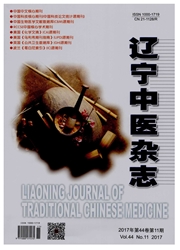

 中文摘要:
中文摘要:
目的:明确不同腰围的肥胖患者的虚实证候特点。方法:将874例肥胖患者依据腰围的不同分为腹型肥胖组和非腹型肥胖组,比较两组中医证候的差异。结果:北京市社区居民腹型肥胖组和非腹型肥胖组中女性皆高于男性,随着年龄的增大,腹型肥胖组比例明显加大。腹型肥胖患者合并高血压224例(25.6%)、糖尿病前期160例(20.3%)、糖尿病179例(27.4%),非腹型肥胖患合并高血压20例(23.0%)、糖尿病前期12例(13.8%)、糖尿病14例(16.1%);腹型肥胖与非腹型肥胖在虚实证候上有显著性差异(P〈0.01),实证中腹型肥胖的比例低于非腹型肥胖,虚证、虚实夹杂证中腹型肥胖的比例高于非腹型肥胖。结论:不同腰围的肥胖患者的虚实证候特点不同,需给予不同的治疗。
 英文摘要:
英文摘要:
Objective: Clearing the different waist of the obese patients"xushi"Syndrome characteristics.Methods:874 cases of obesity based on waist circumference of the abdominal obesity divided into different groups and non-abdominal obesity group,the comparison group syndrome differences.Result:Beijing residents abdominal obesity and non-abdominal obesity in the group of women were higher than males,with the increase of age,abdominal obesity significantly increased the proportion of group.Abdominal obesity hypertension patients with 224 cases(25.6%),diabetes early 160(20.3 per cent),diabetes 179(27.4%),non-abdominal obesity with hypertension from 20 cases(23.0%),12 pre-diabetes(accounted for 13.8%),diabetes mellitus 14(16.1%):abdominal obesity and non-abdominal obesity in the“xushi”Syndrome.There was significant difference(P〈0.01),in abdominal obesity Empirical the proportion of lower abdominal obesity,deficiency,the strength permit inclusion in abdominal obesity higher than the proportion of non-abdominal obesity.Conclusion:Waist circumference of obese patients“xushi”characteristics of different syndromes,the need for the different treatment.
 同期刊论文项目
同期刊论文项目
 同项目期刊论文
同项目期刊论文
 期刊信息
期刊信息
